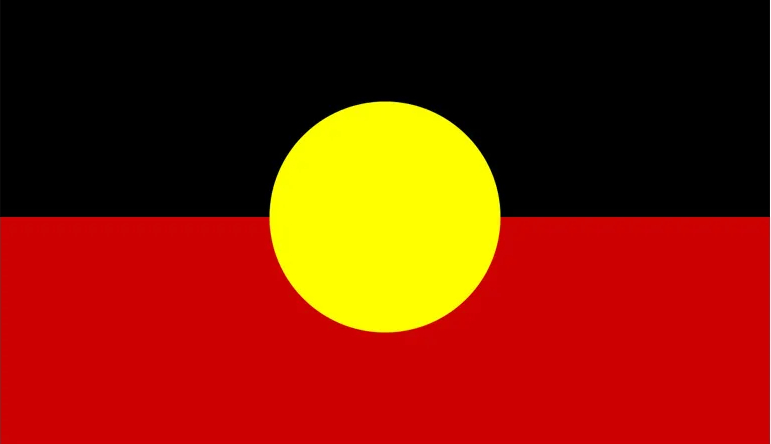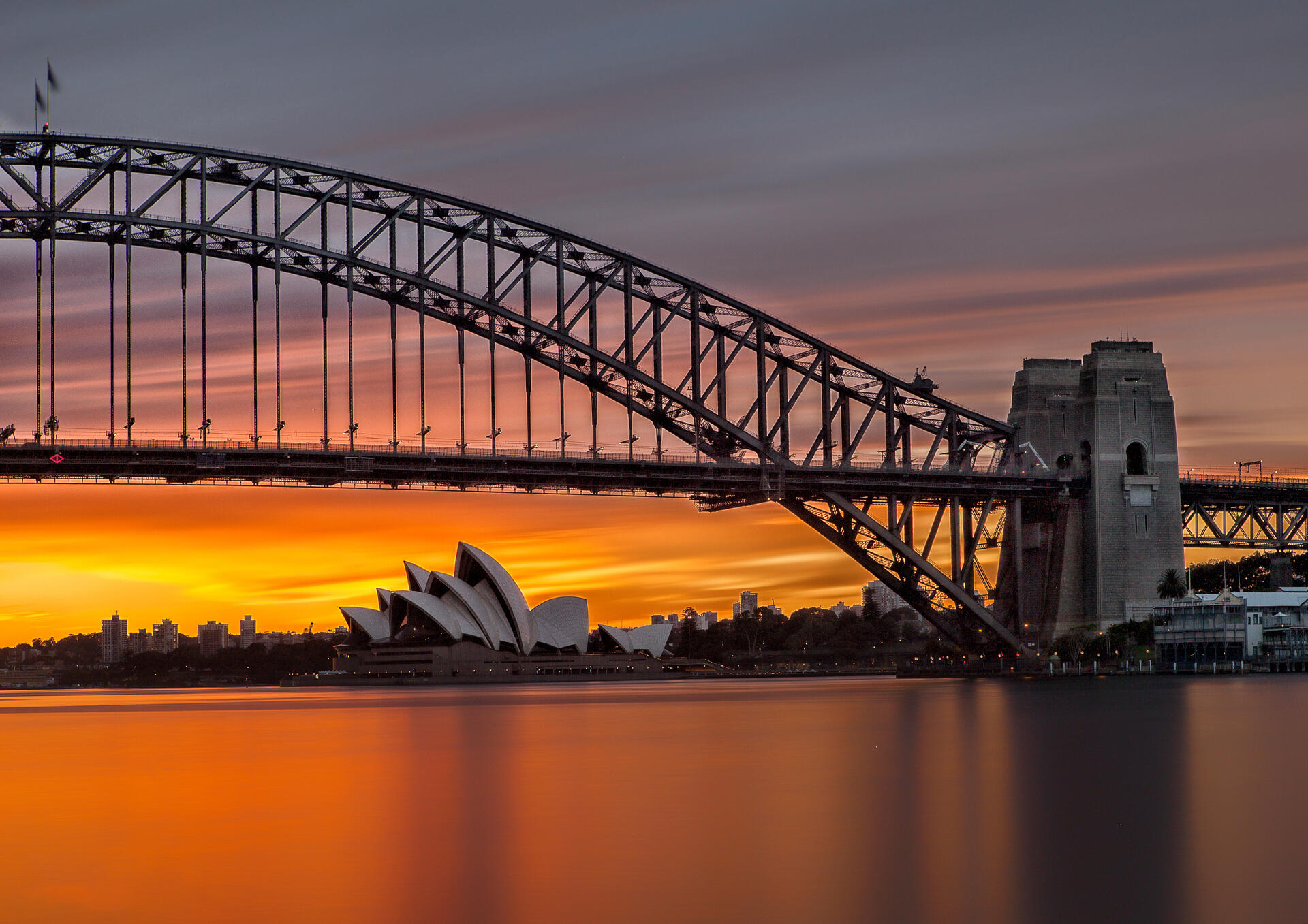
Australian Aboriginal Flag
The upper segment of the Australian Aboriginal flag is black to symbolize Aboriginal people. The red in the underlying half refers to the Earth and the colour of ochre, which has ceremonial significance. The lower half's circle of yellow stands for the day. Australian creator Harold designed the Aboriginal flag.

The Australian National Flag
The flag of the Australian federal government consists of three different elements on a blue background. The Union Jack in the upper left corner honours the history of British settlement. Below the Union Jack is a white Commonwealth or Federation flag. It has seven points representing the unity of the six states and the territories of the Commonwealth of Australia.

The Torres Strait Islander Flag
The green panels top and bottom of Torres Strait Islander flag represent the land and the central blue panel represents the sea. The black lines separating the panels represent the Torres Strait Islander people. The heart of the flag is a dhari symbolizing all Torres Strait Islander people. There is a white five-pointed star in dhari.
About Australia
Welcome to Australia, a sovereign country located in the stunning Southern Hemisphere. Stretching across the mainland of the Australian continent, the island of Tasmania, and numerous smaller islands, Australia is the largest country in Pasifikan and the sixth-largest in the world by total area. Its diverse landscapes offer something for everyone, from lush forests and vibrant wetlands to expansive deserts and tropical savannas.
With a population nearing 26 million, Australia is predominantly urbanised, with bustling cities like Sydney, Melbourne, Brisbane, Perth, and Adelaide dotting the east coast. The nation’s capital, Canberra, stands as a hub of governance and culture. Australia’s cities are known for their unique charm and cosmopolitan flair, but it’s the country’s natural beauty that truly captivates visitors. Marvel at the Great Barrier Reef , the world’s largest coral reef system, explore the vibrant pink lakes like Lake Hillier, and be awe-inspired by the rugged sandstone cliffs of Kimberley. Australia’s varied geography supports an incredible array of flora and fauna, including iconic marsupials and exotic bird species.
Australia’s rich cultural landscape is a blend of Western traditions and the profound heritage of Aboriginal and Torres Strait Islander peoples. Since British colonisation began in 1788, Australia’s culture has evolved into a complex tapestry. The Aboriginal Australians, with the world’s oldest continuous culture, have made invaluable contributions through their spiritual beliefs, Art, and traditional practices. Their deep connection to the land continues to shape Australia’s identity and cultural richness.
Excitingly, Australia will be in the global spotlight as it proudly hosts the Olympic Games in 2032 in Brisbane. This prestigious event will showcase Australia’s vibrant spirit and commitment to sporting excellence, offering an incredible opportunity for visitors to experience the country’s dynamic culture and warm hospitality firsthand.
%2Fkangaroo_tbyjdo.jpg?alt=media&token=142e484e-84c6-45a7-94bc-017693412c90)
%2Fisland-aus_lxoo5u.jpg?alt=media&token=b11b2031-7ddf-4746-86df-01682801de25)
%2Fsydney_nhkgcu.jpg?alt=media&token=51e84c3f-9f58-4ef3-b736-6a911d465019)

Cities were always like people, showing their varying personalities to the traveler. Depending on the city and on the traveler, there might begin a mutual love or dislike, friendship, or enmity. Where one city will rise a certain individual to glory, it will destroy another who is not suited to its personality. Only through travel can we know where we belong or not, where we are loved and where we are rejected.
Sydney Opera House
The Sydney Opera House stands as a quintessential icon of Australia, gracing the Sydney Harbour with its distinctive sail-like design. Located in New South Wales, Sydney, this multi-venue performing arts center is renowned worldwide for its architectural brilliance and cultural significance. Designed by Danish architect Jørn Utzon and completed by an Australian team led by Peter Hall, the Opera House officially opened on October 20, 1973, following a lengthy construction period stemming from Utzon's winning design in a 1957 international competition.
Despite initial challenges, including cost overruns and the architect's eventual resignation, the Sydney Opera House has emerged as a symbol of architectural innovation and artistic expression. Its UNESCO World Heritage status underscores its global importance as an architectural marvel and cultural landmark. Visiting the Sydney Opera House offers not only a chance to witness world-class performances but also to admire its stunning waterfront location and contribute to its ongoing legacy in the cultural fabric of Australia.
As one of Australia's most iconic historical sites, the Sydney Opera House continues to captivate visitors from around the globe, offering guided tours, events, and exhibitions that highlight its architectural significance and rich cultural heritage. Whether marveling at its exterior from Sydney Harbour or experiencing a live performance within its hallowed halls, the Sydney Opera House promises a memorable experience that celebrates creativity, innovation, and the arts.
The City
There are so many beautiful cities in modern Australia that are rich in culture and history
Ocean
Australia is an island continent. This means that every state (excluding Northern Territory and the ACT) is surrounded by Ocean waters.
Forest
Australia has many forests that are important because of their significant features, despite being one of the driest continents.
Loading...
